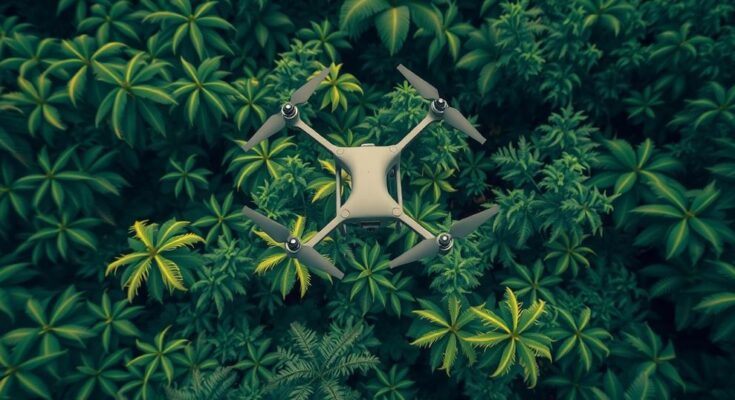In Brazil’s Yanomami Indigenous Land, youth are utilizing drones to monitor their territory against illegal mining activities. The initiative arose due to severe environmental and humanitarian crises caused by approximately 20,000 illegal miners. Supported by HAY and international partners, the training program empowers these young people to safeguard their ancestral land and cultural traditions using modern technology.
The Yanomami Indigenous Land, the largest in Brazil, is being protected by its youth using drone technology to monitor illegal mining activities. This territory, which spans nearly the size of Portugal, is under threat from approximately 20,000 illegal miners seeking gold and cassiterite, resulting in a significant humanitarian and environmental crisis. Given the absence of law enforcement and suitable monitoring tools, the Yanomami have turned to drone surveillance to counteract these threats.
In response to the invasions commencing in 2015, the Yanomami community, feeling abandoned, initiated their own protective measures. Following appeals to the government for assistance—largely ignored during Jair Bolsonaro’s administration (2019-2022), which favored mining on Indigenous lands—the Hutukara Yanomami Association (HAY) sought global partnerships to train young individuals in drone operation. This initiative, begun in 2021 at the COP26 climate summit, received funding from European organizations through CAFOD.
The youth of the Yanomami and Ye’kwana, totaling 32,212 individuals, realized the necessity of drone technology to oversee their vast territory of around 10 million hectares. Training courses aimed to foster innovation and enable these young operators to become multipliers of their knowledge within their communities. Cidiclei Palimitheli, one such participant, reported his excitement about the advanced training, including new automated drone functionalities.
The program has seen significant engagement, with three workshops held between 2022 and 2024, providing practical and theoretical knowledge on drone operation. Participants like Alexandre Ye’kwana expressed pride in their ability to independently map mining areas and create flight plans, showcasing their acquired skills and empowerment through this technology. The long-term goal is to extend drone monitoring across the entire Yanomami territory.
The election of Luiz Inácio Lula da Silva in 2023 brought renewed hope for the Yanomami, with promises to protect their land and evict illegal miners. Although government raids in 2023 resulted in significant reductions in illegal mining activities, ongoing challenges remain as some miners have returned to the territory. Despite the advancements in eviction efforts, continual protection initiatives such as the drone program are crucial for the Yanomami’s autonomy and security.
With HAY collaborating with the Indigenous Council of Roraima, the training has yielded positive outcomes, emphasizing community collaboration led by Indigenous instructors. Participants have gained invaluable skills that enable mapping and monitoring of their environments, essential for protecting their community from ongoing threats such as mercury pollution from mining activities. Experts stress the importance of continuous training to ensure that the Yanomami community can maintain surveillance independently in the future.
The empowerment of the Yanomami youth through drone training exemplifies a proactive approach to safeguarding their ancestral land from illegal mining threats. Despite facing significant challenges from government neglect and the persistence of invaders, the community has made remarkable strides in utilizing technology for environmental monitoring. Sustaining these efforts dramatically enhances their capability to protect their territory and cultural legacy.
Original Source: news.mongabay.com




